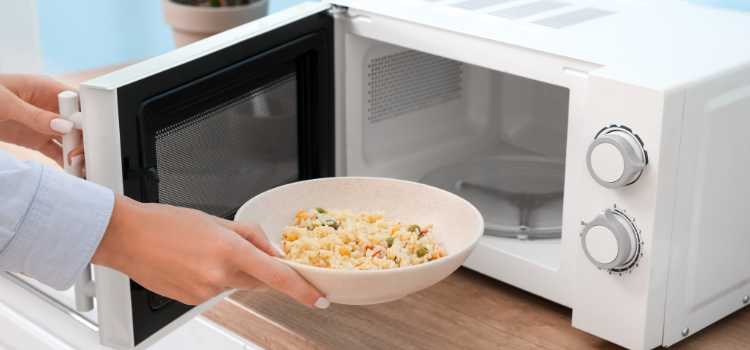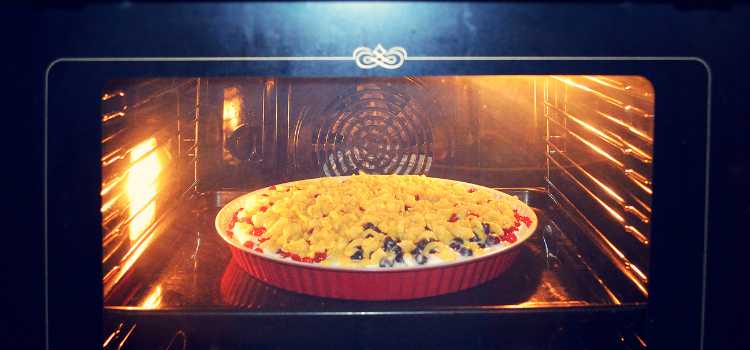As an Amazon Associate, I earn from qualifying purchases

Porcelain, a material celebrated for its fine elegance and durability, has been a staple in both culinary and decorative spheres for centuries. Whether it’s a beautifully crafted dinner set that adds charm to your dining table or a trusty casserole dish that helps you whip up family favorites, porcelain’s versatility is undeniable.
But when it comes to using porcelain in the oven, many of us find ourselves pausing. Is it safe to use porcelain in an oven? Understanding the capabilities and limitations of porcelain cookware can unlock a world of culinary possibilities while ensuring safety.
Properties of Porcelain
To appreciate why porcelain is such a popular choice, it’s essential to understand what makes it unique. Porcelain is crafted from a refined mixture of kaolin clay, feldspar, and quartz. This combination is fired at extremely high temperatures, creating a dense, glass-like material.
The result is a piece that is not only beautiful but also incredibly strong and heat-resistant. Porcelain’s ability to withstand high temperatures makes it a favorite for many cooking tasks. Its non-porous surface ensures that heat is distributed evenly, which is crucial for baking and roasting.
This property helps in achieving consistent and desirable cooking results. Moreover, porcelain’s aesthetic appeal cannot be overlooked. Its smooth, often glossy finish and delicate translucence add a touch of elegance to any kitchen setting, making it both a functional and decorative piece.
Safety Considerations
While porcelain is generally safe for oven use, certain precautions are necessary to prevent damage. One of the main concerns is thermal shock, which occurs when there is a rapid temperature change. This can cause the porcelain to crack or even shatter. To mitigate this risk, it’s important to never place cold porcelain directly into a hot oven.
Allow the dish to reach room temperature first. This gradual transition helps the material adjust to the temperature change without stress. Moreover, it’s crucial to ensure that the porcelain item is labeled as oven-safe. Not all porcelain items are designed for oven use.
Those intended purely for decorative purposes or fine dining might not withstand high temperatures. Always inspect for any signs of damage like cracks or chips before using porcelain in the oven, as these can worsen when exposed to heat.
Types of Porcelain Cookware

Porcelain cookware comes in various forms, each designed with specific uses in mind. Understanding these can help you make the right choice for your cooking needs.
- Bakeware: Items such as casserole dishes, pie plates, and baking sheets usually fall under this category. These are typically designed to endure high temperatures and are safe for oven use. Their design ensures that heat is distributed evenly for perfect baking and roasting.
- Serving Dishes: Plates, bowls, and platters that are often used for serving might also be oven-safe, but it’s essential to verify this with the manufacturer. While some are designed to transition from oven to table, others are meant only for serving cold or room temperature foods.
- Decorative Items: These pieces, including fine china and ornamental porcelain, are generally not intended for oven use. They may not have the structural integrity to handle high temperatures and should be kept out of the oven unless specified otherwise.
- Reputable Brands: Brands like Le Creuset and Emile Henry are well-known for producing high-quality porcelain cookware that is both functional and aesthetically pleasing. These brands often mark their products clearly with oven safety information, ensuring peace of mind for users.
Tips for Using Porcelain in the Oven
Maximizing the benefits of porcelain cookware involves a few strategic practices:
- Preheat with Care: Always place the porcelain dish in the oven as it preheats. This allows the dish to gradually adjust to the rising temperature, minimizing the risk of thermal shock.
- Gradual Temperature Changes: Avoid sudden temperature spikes or drops. If you need to increase or decrease the oven’s heat, do so incrementally.
- Proper Cleaning: To maintain the integrity and beauty of your porcelain, clean it using a soft cloth and mild detergent. Avoid using abrasive materials that can scratch or damage the surface. Ensure that the dish is thoroughly dried before storing to prevent moisture damage.
- Storage Considerations: When not in use, store porcelain in a manner that prevents chipping. Stack items with care, using protective padding if necessary.
Conclusion
Porcelain is a delightful addition to any kitchen, offering a unique blend of aesthetic appeal and practical functionality. Its ability to withstand high temperatures makes it an excellent choice for a variety of cooking methods, provided that safety guidelines are followed. Always prioritize checking manufacturer instructions and ensure that the porcelain cookware is suitable for the intended use.
With careful handling and proper usage, porcelain can enhance your culinary experiences, bringing elegance and efficiency to your kitchen. Whether you’re baking a cherished family recipe or serving up a gourmet meal, porcelain’s timeless charm is sure to elevate your dining experience.
FAQ
How can you tell if porcelain is oven safe?
To determine if porcelain is oven safe, check for any manufacturer markings or labels indicating oven safety. Look for symbols or text on the bottom of the cookware. Absence of these markings typically means the item isn’t suitable for oven use. Always follow the manufacturer’s guidelines.
Can porcelain be in the oven?
Yes, many porcelain items can be used in the oven, but it’s crucial to verify their oven safety. Only use porcelain cookware that is specifically labeled as oven safe to avoid damage or breakage. Items not designed for high temperatures may crack or shatter.
Can porcelain enamel go in the oven?
Porcelain enamel cookware is typically safe for oven use, as it’s designed to withstand high temperatures. However, always confirm with the manufacturer’s instructions to ensure safety. This type of cookware combines the durability of metal with the non-stick properties and aesthetic of porcelain enamel.
Is porcelain heat safe?
Porcelain is generally heat safe and can withstand high temperatures, making it suitable for various cooking applications. However, it is important to avoid sudden temperature changes to prevent thermal shock, which can cause cracking. Always ensure the porcelain is labeled as oven safe for direct heat use.
As an Amazon Associate, I earn from qualifying purchases